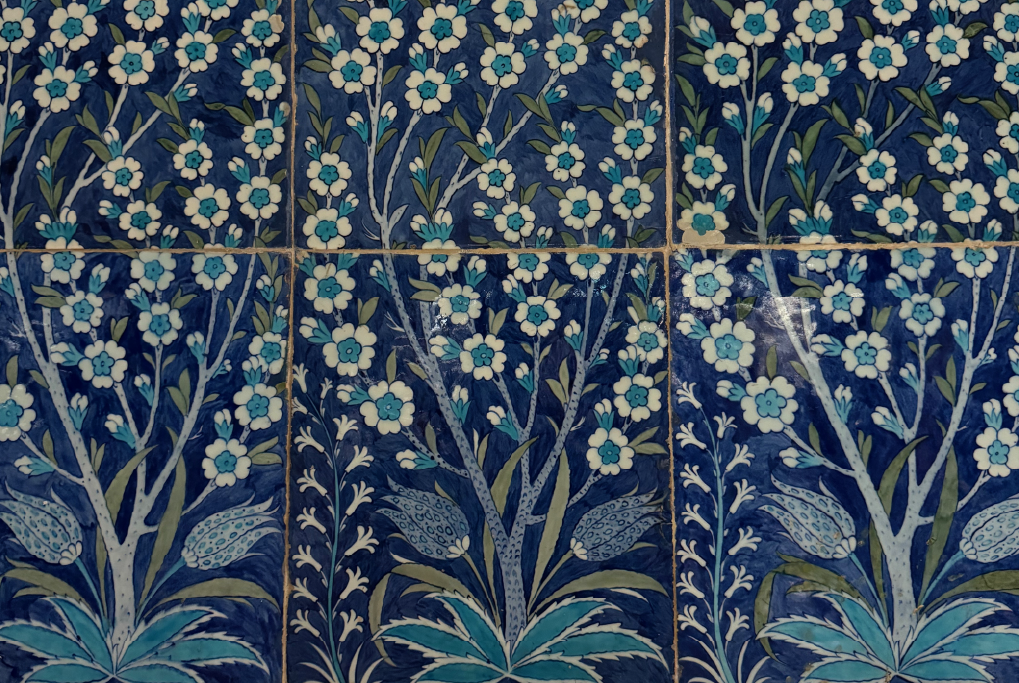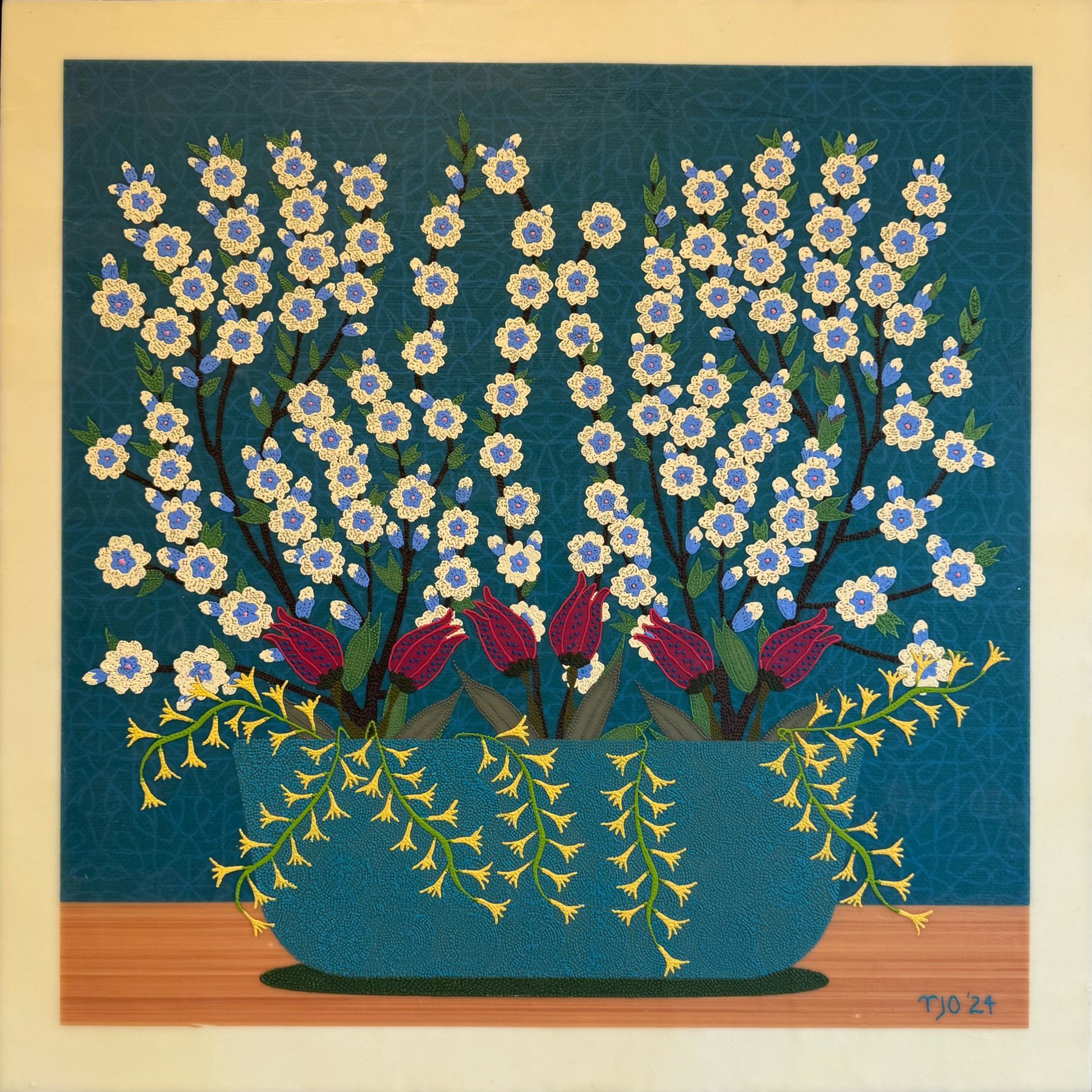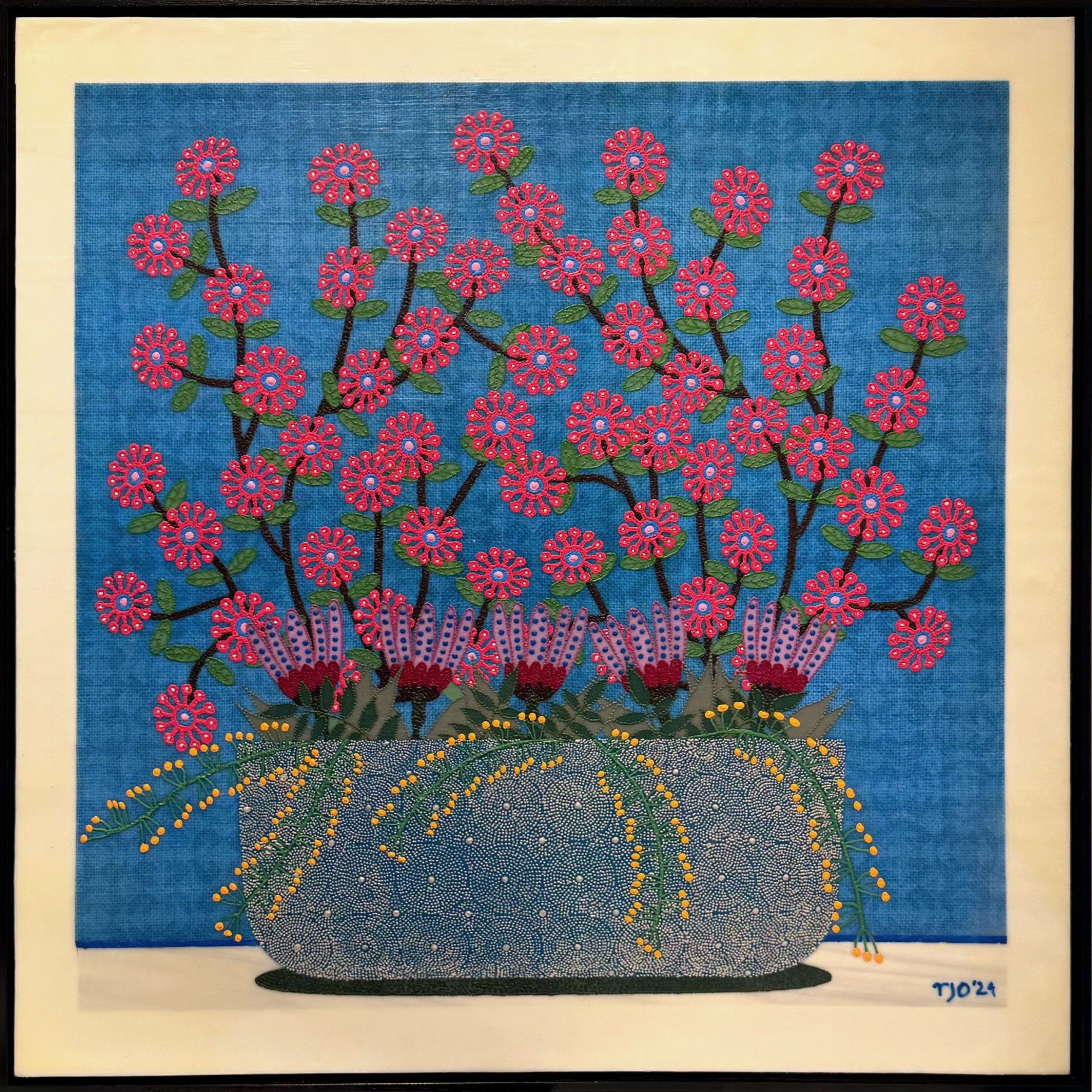Turkic Tapestry: Inspiration from the Gulbenkian Museum
17th Century Turkic Tiles, Gulbenkian Museum, Lisbon, PT
When my husband Scott and I visited Lisbon in September 2024, one of the top things on our list was to return to the Calouste Gulbenkian Museum. We’d first been there on a trip in the 1990s, and we both remembered how striking the collection was. Going back more than two decades later, we were eager to see it again—and it didn’t disappoint.
The museum is the legacy of Calouste Sarkis Gulbenkian, a wealthy Armenian businessman and philanthropist known for his deep love of the arts. Born in the Ottoman Empire in 1869, Gulbenkian made his fortune in oil and spent much of his life assembling one of the most remarkable private art collections of the 20th century. He lived in several countries throughout his life but chose Lisbon as his final home, leaving his collection to the Portuguese people in the form of a foundation and museum.
What stood out to me most during this recent visit was Gulbenkian’s collection of Turkic tiles, especially the Iznik ceramics from the Ottoman Empire. The floral designs—tulips, carnations, and stylized leaves—were incredibly detailed and beautifully composed. The rich cobalt blues and deep reds, paired with crisp white accents, had a visual rhythm that felt both grounded and alive.
That visit ended up having a real impact on my painting. Back in the studio, I started thinking about how to bring those patterns and colors into my own work. I wound up creating a still life I titled Turkic Tapestry. It was an opportunity to take the Delph blue tones that caught my eye and translate them into a more vibrant composition—layering them with white flowers and burgundy Turkish tulips.
And I didn’t stop there. That first piece sparked a series. I followed it with a couple more compositions, this time experimenting with pink and red flowers and a variety of pots. Each one took the spirit of those historic tiles and reimagined them through my own lens—blending pattern, color, and texture in ways that feel both familiar and newly personal.
Gulbenkian began collecting Iznik ceramics in the late 19th century, and the quality and beauty of his collection is undeniable. Being able to revisit it, decades after our first trip, was a powerful reminder of how certain images can stay with you—and how they can evolve into something new through your own hands.




